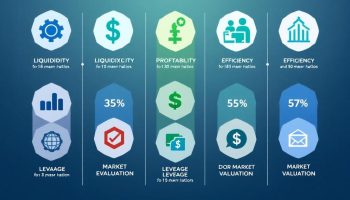
Understanding Core Cause Analysis
Core cause analysis is a systematic problem-solving approach that identifies the fundamental reasons behind business issues instead of just addressing surface symptoms. This analytical method examines underlying factors by investigating causal relationships and establishing the primary drivers of organizational challenges.
How Core Cause Analysis Drives Business Excellence
Core cause analysis is a vital tool for organizational improvement that helps businesses prevent recurring issues and optimize performance. When properly implemented, this approach enables companies to develop sustainable solutions that address fundamental problems rather than applying temporary fixes. The result? Improved operational efficiency, lower costs, and better customer satisfaction. By pinpointing the true origins of business challenges, you’ll make informed decisions that strengthen processes, eliminate waste, and build resilient systems.
This transforms reactive problem management into proactive improvement strategies, giving your business a competitive edge. Quality experts recognize core cause analysis as essential for sustainable business improvement.
Organizations that adopt root cause analysis as a systematic approach have been shown to reduce operational costs by 30% and enhance customer satisfaction by 20%. This proactive strategy not only addresses current issues but also prevents future problems.
Core Cause Analysis
Core cause analysis helps you identify the root issues behind business problems rather than just treating symptoms. This detailed method lets you fix challenges at their source for long-lasting improvements instead of temporary patches. By uncovering the true drivers of organizational issues, you’ll create sustainable solutions that enhance operations and boost overall performance.
Companies that implement proper core cause analysis can prevent recurring problems, improve efficiency, and achieve better business outcomes. This approach transforms how you handle challenges by addressing fundamental issues within processes, systems, and organizational structures rather than applying surface-level fixes that won’t last.
The key to successful core cause analysis lies in following a structured framework that guides you from problem identification through solution implementation. When you use this systematic method correctly, you’ll turn business challenges into opportunities for significant growth and improvement.
1. Define the Problem
The first crucial step in effective core cause analysis is clearly defining what you’re trying to solve. Begin by documenting the specific issue or challenge your organization faces, being as precise as possible about what’s happening. When conducting a thorough core cause analysis, gather initial data including when the problem first appeared, its frequency, and observable patterns.
Establish the problem’s scope by determining which business areas are affected and quantify the impact through metrics like decreased productivity, financial losses, or customer complaints. This helps prioritize your analysis efforts based on business significance.
Finally, create a concise problem statement that:
- Describes the issue objectively without assuming causes
- Specifies when and where the problem occurs
- Quantifies the impact when possible
- Avoids blame or predetermined solutions
A well-defined problem creates the foundation for your entire root cause investigation process.
2. Collect and Analyze Data
Gathering comprehensive information is a critical step in any core cause analysis. Begin by interviewing key stakeholders who have firsthand knowledge of the problem. These conversations often reveal nuances that documentation alone cannot provide.
When conducting your core cause analysis, review existing documentation including process maps, previous incidents, and performance reports. This historical context helps establish patterns that might not be immediately obvious.
Quantitative metrics provide the objective foundation for your analysis. Collect relevant data points such as:
- Error rates and frequencies
- Timeline of occurrences
- Financial impacts
- Operational metrics
- Customer feedback data
Visual representations transform complex data into digestible insights during your core cause analysis. Create charts, diagrams, and graphs to identify trends and relationships between variables. This visual approach makes patterns more apparent to all team members.
The “5 Whys” technique is particularly effective for digging deeper into underlying issues. By repeatedly asking why a problem occurs, you peel back layers to identify the fundamental cause rather than just addressing symptoms. Apply this method during group discussions to encourage analytical thinking.
Expert Insight: To effectively collect and analyze data for core cause analysis, engage key stakeholders through interviews for deeper insights. Review historical documentation for patterns and complement findings with quantitative metrics. Utilize visual representations and techniques like the “5 Whys” to clarify complex data and uncover fundamental issues.
3. Identify Potential Root Causes
After collecting relevant data, you must now identify the underlying core cause analysis factors driving your problem. Start by organizing brainstorming sessions where team members can freely contribute insights about potential causes. These sessions work best when you practice active listening and create a judgment-free environment.
Implement cause-and-effect diagrams (also called Ishikawa or fishbone diagrams) to visually map possible causes. This powerful core cause analysis tool helps categorize contributing factors into groups such as people, processes, equipment, materials, environment, and management. When constructing your diagram:
- Place the problem statement at the “head” of the fish
- Draw main category “bones” branching from the spine
- Add specific causes as smaller bones on each main branch
- Look for patterns and relationships between causes
Prioritize the most likely causes by evaluating available evidence and applying probability analysis. Document supporting evidence for each potential cause to maintain analytical rigor throughout your root cause investigation. This systematic approach ensures you address the true drivers of problems rather than merely treating symptoms.
Expert Insight: To effectively identify root causes, organize brainstorming sessions that encourage open contributions while practicing active listening. Utilize cause-and-effect diagrams to visually categorize potential causes, and prioritize them based on evidence. This structured approach ensures you address the underlying issues rather than just their symptoms.
4. Develop and Implement Solutions
After identifying the root causes through core cause analysis, it’s time to develop targeted solutions. Create comprehensive action plans that address each identified root cause rather than just treating symptoms. When developing solutions, involve key stakeholders to ensure buy-in and practical implementation approaches.
Assign clear responsibilities and set realistic deadlines for each action item. This creates accountability and helps track progress through the implementation of an action log that monitors all activities. Establishing measurable success metrics is crucial for evaluating whether your solutions effectively address the core causes identified.
Monitor implementation progress through regular check-ins and status updates. This allows you to identify any obstacles early and make necessary adjustments. Consider implementing a post-implementation review process to evaluate overall effectiveness.
Document all changes and improvements thoroughly. This documentation serves multiple purposes:
- Creates an institutional knowledge base
- Provides evidence for future decision-making
- Helps prevent similar issues from recurring
- Supports continuous improvement initiatives
Expert Insight: To effectively implement solutions, create detailed action plans addressing root causes with input from key stakeholders. Assign responsibilities and deadlines, monitor progress regularly, and adjust as needed. Thorough documentation of changes and outcomes fosters institutional knowledge and supports ongoing improvements and future decision-making.
5. Monitor and Verify Results
After implementing your solutions based on core cause analysis, monitoring results becomes essential to validate your approach. Track key effectiveness metrics that directly relate to the root causes you identified. For instance, if you implemented process changes, measure both efficiency and quality indicators to ensure comprehensive monitoring.
Compare before and after data to quantify the impact of your interventions. This comparison serves as concrete evidence of whether your core cause analysis correctly identified the underlying issues. When conducting these comparisons, use consistent measurement methodologies to ensure validity.
Gathering feedback from stakeholders provides valuable qualitative insights about your solutions. Set up regular stakeholder satisfaction checks to supplement your quantitative data. Those closest to the process can often identify subtle improvements or remaining issues that metrics might miss.
Be prepared to make adjustments as needed based on your findings. Effective core cause analysis is rarely a one-time fix; instead, it requires an iterative approach. If results don’t match expectations, conduct follow-up analyses to refine your understanding.
Finally, document lessons learned throughout the process. Create a repository of successful approaches, challenges encountered, and insights gained to build organizational knowledge around effective core cause analysis techniques.
Expert Insight: To ensure effective core cause analysis, continuously monitor results by tracking key metrics before and after implementing solutions. Gather stakeholder feedback to gain qualitative insights, and be ready to adjust your approach based on findings. Document lessons learned to enhance organizational knowledge and improve future analyses.
Core cause analysis is a systematic approach to identifying the fundamental reasons behind business problems rather than just addressing surface symptoms. This five-step methodology—defining the problem, collecting data, identifying root causes, implementing solutions, and monitoring results—provides a structured framework for organizations to resolve issues permanently rather than applying temporary fixes.
Core cause analysis represents an essential business capability that transforms reactive problem-solving into strategic improvement. By methodically uncovering underlying issues, organizations can prevent recurring problems, optimize resource allocation, improve operational efficiency, and foster a culture of continuous improvement that enhances decision-making across all levels of the enterprise.
Mastering Core Cause Analysis: Key Takeaways
Core cause analysis provides a systematic framework for solving business problems by identifying and addressing their fundamental origins rather than just treating symptoms. The five-step approach—defining problems precisely, gathering comprehensive data, identifying underlying causes through techniques like the “5 Whys” and fishbone diagrams, implementing targeted solutions, and verifying results—creates a continuous improvement cycle that transforms reactive troubleshooting into strategic problem prevention.
When properly executed, core cause analysis allows organizations to resolve issues permanently, optimize resource allocation, improve operational efficiency, and build institutional knowledge that prevents similar problems from recurring. By fostering a data-driven, collaborative approach to problem-solving, businesses can create sustainable solutions that address fundamental issues rather than applying quick fixes that fail to deliver lasting improvement.
Essential Core Cause Analysis Checklist
- Define the problem with a clear, objective statement that quantifies impact and avoids blame
- Gather comprehensive data through stakeholder interviews, documentation review, and metrics collection
- Create visual representations of data to identify patterns and relationships
- Apply the “5 Whys” technique to dig deeper into underlying issues
- Organize brainstorming sessions to identify potential causes in a judgment-free environment
- Implement cause-and-effect diagrams to categorize contributing factors
- Develop action plans that address root causes with stakeholder involvement
- Assign clear responsibilities and set realistic deadlines for implementation
- Establish measurable success metrics to evaluate solution effectiveness
- Document all changes, outcomes, and lessons learned for future reference
Frequently Asked Questions
- What is the difference between core cause analysis and root cause analysis? Core cause analysis and root cause analysis are essentially the same process, focusing on identifying the fundamental sources of problems rather than just addressing symptoms. Both methodologies use similar techniques to uncover underlying issues.
- How long should a core cause analysis take to complete? The timeline varies based on problem complexity, but effective analyses typically take 1-4 weeks. Simple issues may be resolved in days, while complex organizational problems could require a month or more of investigation and solution development.
- What makes the “5 Whys” technique so effective? The “5 Whys” technique works by forcing teams to move beyond superficial explanations by repeatedly asking why a problem occurs. This simple but powerful approach helps peel back layers of symptoms to reach fundamental causes that might otherwise remain hidden.
- How do I know if I’ve identified the true root cause? You’ve likely identified the true root cause when addressing it prevents the problem from recurring. A good test is whether removing this cause eliminates the problem entirely, and whether the solution creates sustainable improvement rather than temporary relief.
- What should I do if the implemented solution doesn’t fix the problem? If your solution doesn’t resolve the issue, return to your analysis to reassess your understanding of the root cause. This often indicates you’ve addressed a symptom rather than the fundamental issue, requiring deeper investigation and possibly collecting additional data.
- How can I encourage honest participation in core cause analysis sessions? Create a blame-free environment focused on process improvement rather than personal criticism. Emphasize that the goal is solving problems, not assigning fault, and demonstrate this by responding constructively to all input regardless of its source.






